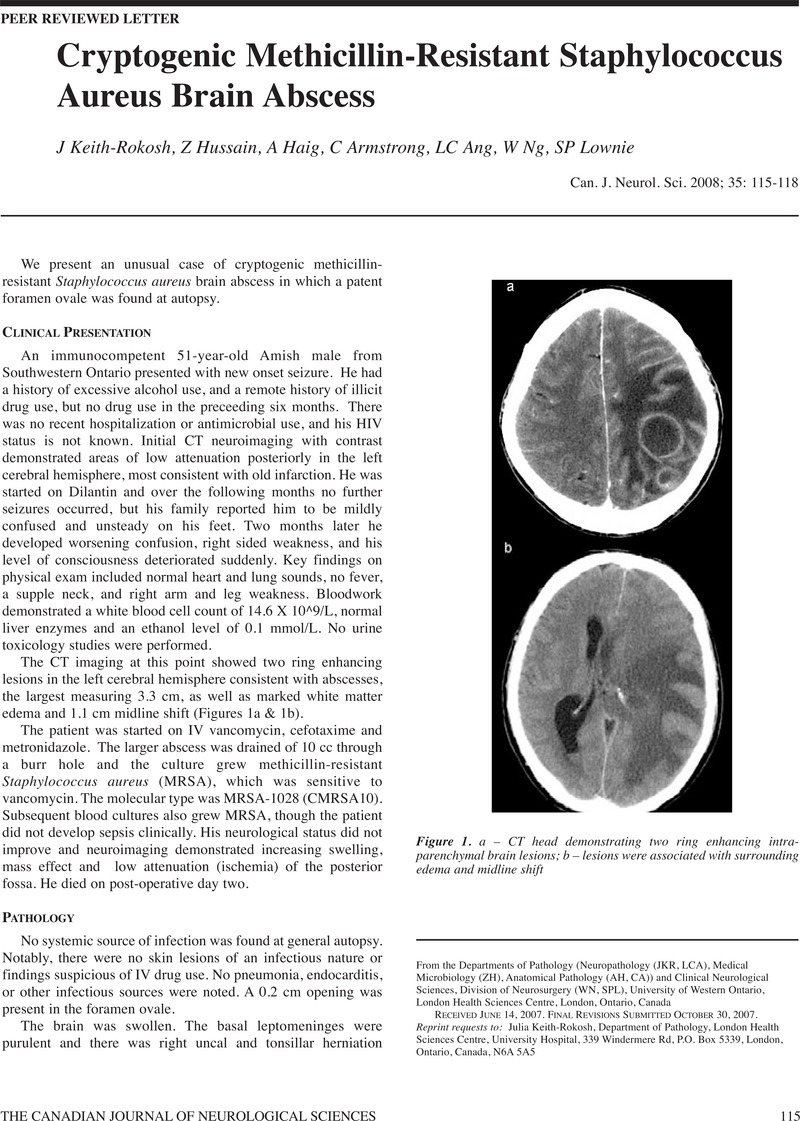Crossref Citations
This article has been cited by the following publications. This list is generated based on data provided by Crossref.
Higuchi, Kanako
Ishihara, Hiroyuki
Okuda, Shiho
and
Kanda, Fumio
2011.
A 51-year-old man with intramedullary spinal cord abscess having a patent foramen ovale.
BMJ Case Reports,
p.
bcr1120103512.
Sadahiro, Hirokazu
Nomura, Sadahiro
Inamura, Akinori
Yamane, Akiko
Sugimoto, Kazutaka
Fujiyama, Yuichi
and
Suzuki, Michiyasu
2014.
Brain abscess associated with patent foramen ovale.
Acta Neurochirurgica,
Vol. 156,
Issue. 10,
p.
1971.
Sugie, Masayuki
Jimi, Takahiro
Kashimura, Yojiro
and
Ichikawa, Hiroo
2014.
Clinical and Radiological Features in the Cases with Cryptogenic Brain Abscess in Association with Patent Foramen Ovale: A Case Report and Review of the Literature.
International Journal of Clinical Medicine,
Vol. 05,
Issue. 21,
p.
1400.
Bahubali, Veena Kumari Haradara
Vijayan, Priya
Bhandari, Vasundhra
Siddaiah, Nagarathna
and
Srinivas, Dwarakanath
2018.
Methicillin-Resistant Staphylococcus aureus Intracranial Abscess: An Analytical Series and Review on Molecular, Surgical and Medical Aspects.
Indian Journal of Medical Microbiology,
Vol. 36,
Issue. 1,
p.
97.



